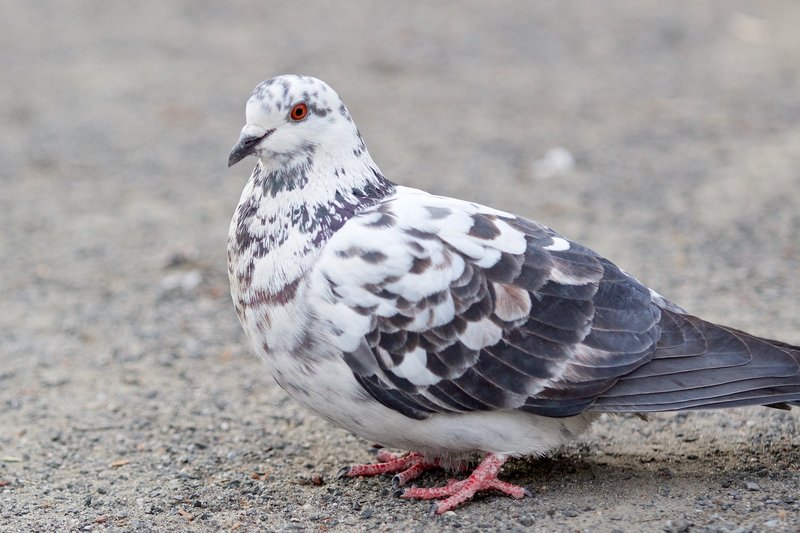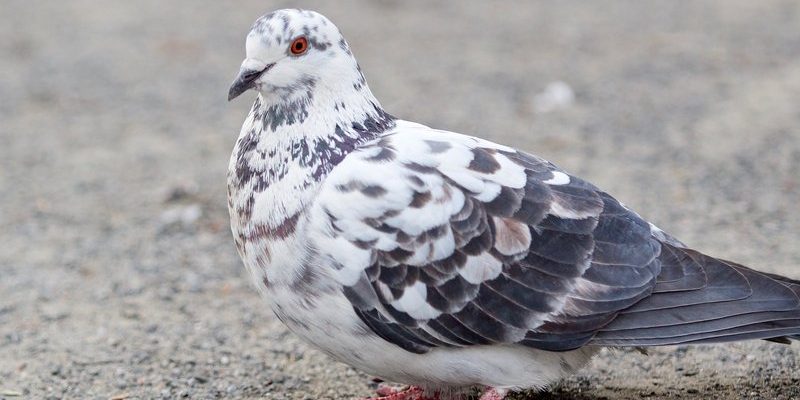
Honestly, the rock pigeon (also called the rock dove) is more than just a bird; it’s a symbol woven into the fabric of many communities. From ancient civilizations to modern urban environments, these birds have been part of stories, myths, and even daily human interactions. Imagine them as the silent witnesses to history—their cooing echoes in the background of significant events, love stories, and cultural rituals.
So, let’s dive into the fascinating journey of the rock pigeon through cultures worldwide and uncover the roles they play in folklore and community life.
Historical Significance of Rock Pigeons
The rock pigeon has a long and rich history, dating back thousands of years. Domesticated by humans since around 3000 BC, these birds have often been associated with agriculture and urban living. Ancient Egyptians revered them, often depicting them in hieroglyphics. You might find it interesting that they were even considered sacred to the goddess Isis.
As communities grew, pigeons became essential for communication. They were used as messengers, carrying important news across cities and even warring fronts. Imagine a time when the only means of sending a letter was through a feathered friend soaring through the skies! This ability to return home from long distances made rock pigeons reliable messengers, earning them love and respect from those who relied on them.
In addition to their role as messengers, they’ve been integral in various cultural practices. For instance, in some cultures, pigeons symbolize peace and hope. The sight of a pigeon can evoke feelings of calm, especially in bustling urban environments. They remind us that nature can still find a place amidst concrete and chaos.
Rock Pigeons in Folklore
You might be surprised to hear just how many stories and myths involve rock pigeons. In many cultures, they are symbols of endurance and loyalty. For instance, in some Native American folklore, pigeons are seen as messengers from the spirit world, often bringing good fortune or warnings about impending danger.
In European traditions, pigeons have often served as symbols of love and fidelity. Think about the classic image of two doves cooing together; it’s not just romantic but also highlights their strong pair bonds. These birds often mate for life, which has made them a symbol for lovers and faithful partners in many cultures.
Folklore also tells tales of rock pigeons in various ways. For instance, in ancient Greece, they were associated with the goddess Aphrodite, representing love and beauty. The birds were often featured in art and literature, reinforcing their connection to various human emotions and experiences. These stories serve as a reminder of how intertwined nature and human culture can be.
The Pigeon in Art and Literature
Over the centuries, rock pigeons have inspired countless artists and writers. Whether painted on canvases or written into poetry, they’ve captured the imagination of many.
For example, in literature, pigeons appear in the works of Charles Dickens, where they symbolize the city’s vibrancy and the lives of the people within it. They represent life’s hustle and bustle, often serving as a backdrop to the stories of human experience.
In the world of art, artists have often used pigeons to symbolize peace. Pablo Picasso’s famous painting “Dove of Peace” features a white pigeon and has become an international emblem for peace and harmony. This demonstrates how a simple bird can carry profound meanings, transcending cultural boundaries.
Even in street art, you can see pigeons portrayed in various styles, from playful to politically charged. Artists use them to comment on urban life, environmental issues, or social justice, showing their relevance in contemporary discussions.
Rock Pigeons and Community Life
Rock pigeons often find their homes in urban environments, and their presence can significantly impact local communities. Many cities embrace these birds, housing them in parks and squares, offering locals a glimpse of nature amidst the hustle of city life.
For some, feeding pigeons is a cherished pastime. Think of the image of children, tossing breadcrumbs and giggling as a flock descends. This interaction fosters a sense of community as people gather around, sharing moments and stories. It can also bridge gaps between diverse groups, uniting people through a shared appreciation for these birds.
Local initiatives often promote pigeon coops to encourage biodiversity in metropolises. These community projects allow residents to learn about bird care and contribute to the local ecosystem positively. It’s a wonderful example of how we can integrate nature into urban settings.
Moreover, the presence of pigeons can create a unique atmosphere—often a calming one. Their gentle cooing can drown out the city’s noise, offering a moment of solace to passersby.
Challenges and Conservation Efforts
While rock pigeons play vital roles in our cultures and communities, they face significant challenges. Urban living poses threats like habitat loss, pollution, and human conflict. Many people view them as pests, leading to negative perceptions and harmful actions against them.
Conservation efforts are essential to ensure these birds continue to thrive in their environments. Community-led initiatives can help educate the public on the rock pigeon’s importance and promote responsible feeding practices. By fostering understanding, we can reduce the stigma surrounding these birds and encourage coexistence.
You might be wondering how you can help. Simple actions like supporting local organizations focused on urban wildlife or advocating for pigeon-safe zones can make a difference. Every effort counts in preserving the role of rock pigeons in our lives and cultures.
The Rock Pigeon as a Cultural Icon
Across various cultures, rock pigeons are celebrated not just for their significance but also as cultural icons. In many places, festivals or events celebrate these birds, highlighting their role in society. For instance, some cities hold annual pigeon races, showcasing their impressive homing abilities while bringing communities together in friendly competition.
In other cultures, ceremonies involve releasing pigeons as a symbol of new beginnings or honoring the dead. The act of letting them fly free represents hope and peace, resonating with many people on a deep level. This connection to human emotions reinforces the idea that pigeons are more than just birds; they are part of the stories that shape our lives.
Rock pigeons also appear in the context of sports, like pigeon shooting or even as mascots that represent local pride. These instances reflect how deeply ingrained these birds are in our communities—they’re not just animals; they symbolize resilience, connection, and continuity through generations.
In conclusion, the rock pigeon plays a multifaceted role in local cultures and folklore. From their historical significance as messengers to their symbolic representation in art and community life, these birds carry stories and meanings that resonate with many. As we continue to coexist with them in our urban environments, it’s essential to celebrate their presence and appreciate the unique ways they enrich our lives. So, next time you see a rock pigeon, take a moment to appreciate its role and the stories it carries with it.

